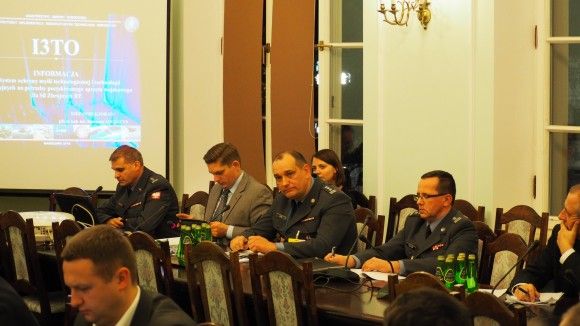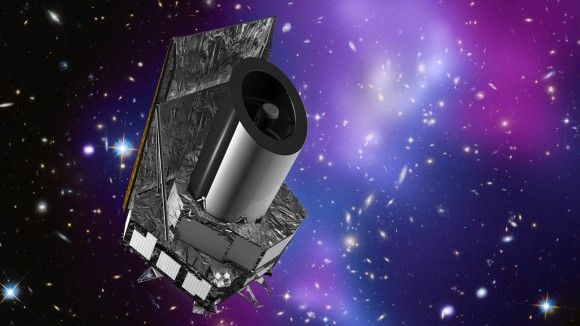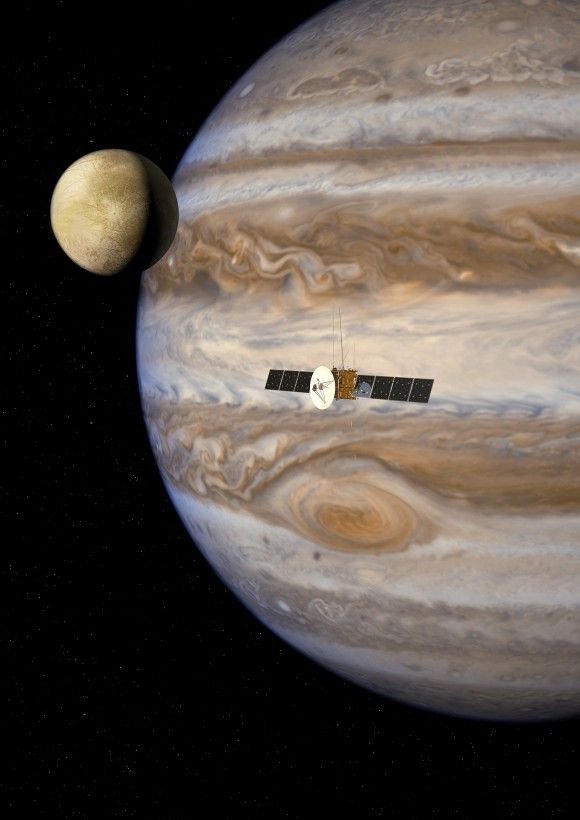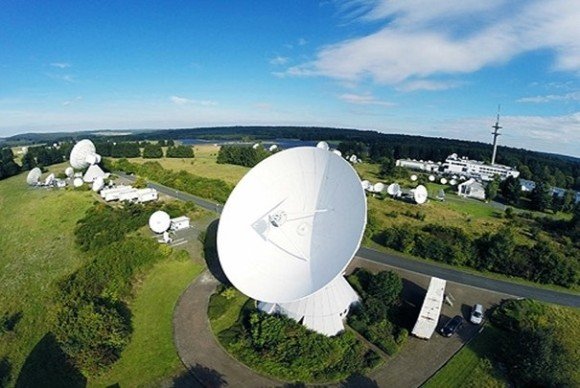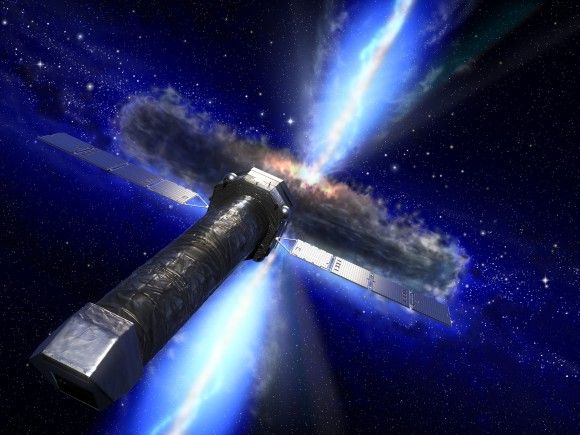MSPO 2017: PGZ Conducts an MBT Offensive
Polish Armaments Group is presenting a number of modernization proposals concerning the Leopard 2 and T-72/PT-91 main battle tanks. The ZM Bumar-Łabędy facility belonging to the PGZ Group has created two variants of modernization of the T-72 family tanks, as well as a technology demonstrator of the Leopard 2PL MBT, developed together with the Rheinmetall Defence company. Another proposal is presented by the WZM facility (Military Automotive Works), showcasing a mobile multi-spectral camouflage on the Leopard 2A5 platform.
The first of the presented proposals concerns modernization of the PT-91 (or the older T-72M1) main battle tanks up to the M2 standard, the goal of which would be to expand the combat abilities and battlefield survivability, mobility and operational capabilities and crew comfort ascribable to the said platform.
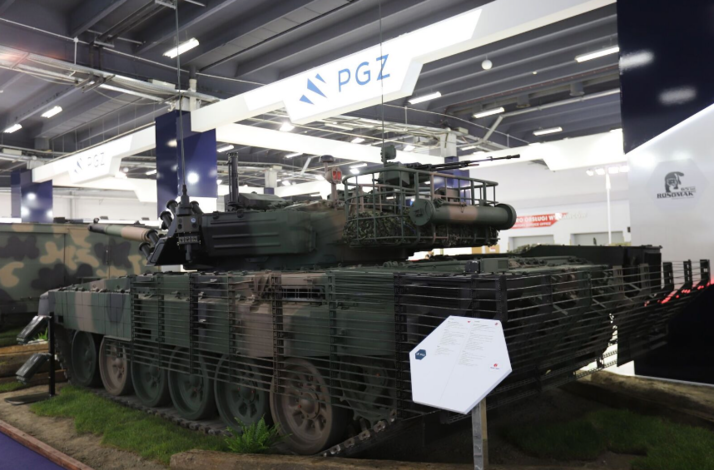
The hull modernization includes engine replacement - now an S-12U unit is used (modified W-46 engine with a power output of 850HP), coupled with a reinforced gearbox (Cx variant). The drivetrain features reinforced suspension (torsion bars, shock absorbers and elastomer bumpers), moreover the carousel-ammo supply system has also been modernized. The tank has also been retrofitted with a new ERA (modernized Erawa I/II system, being a developed concept of the Ukrainian Nozh armour), and slat armour on the back part and on the sides of the hull. The tank has also received rubberised tracks, extra 8-10 kW APU and KDN-1 reversing camera.
The turret itself has been fitted with the 125 mm 2A46MS cannon (which seems to be best suited for the modernized PT-91 platform), with a barrel length of 48 calibres, 902A smoke grenade dispensers and Obra-3 SSP-1 self-protection suite. To enhance the firepower and situational awareness of the crew SAVAN-15 fire control system has been used, along with TKN-3Z night vision system for the commander and PNK-72 Radomka night vision system for the driver. The tank is also going to be fitted with the PCO’s SOD 360 Degrees Observation System. The secondary ammunition storage has also been rearranged.
PT-17, on the other hand, is a development concept of the former PT-16 demonstrator. It is an in-depth modernization of the tank, with a new turret and Ukrainian KBM-2 120 mm cannon, with a barrel length of 50 calibres and composite armour. The back section of the turret features a primary ammunition storage housing 22 rounds and an automated feeder. The turret also features a panoramic observation system for the commander (VIGY-15), coupled with GOC-1 NIKE and GOD-1 IRIS optronic sensors, SSP-1 Obra-3 self-protection system, ZSMU-1276 weapon station, while the architecture of the tank is open for installation of BMS or extra datalinks and communication systems.
S1000R engine is the heart of the applied powerpack. The tank also features additional APU and A/C system. The driver may use the KDN-1 reversing camera, while the steering takes place with the use of a steering wheel. The tank has been developed in collaboration with the Ukrainian industry.
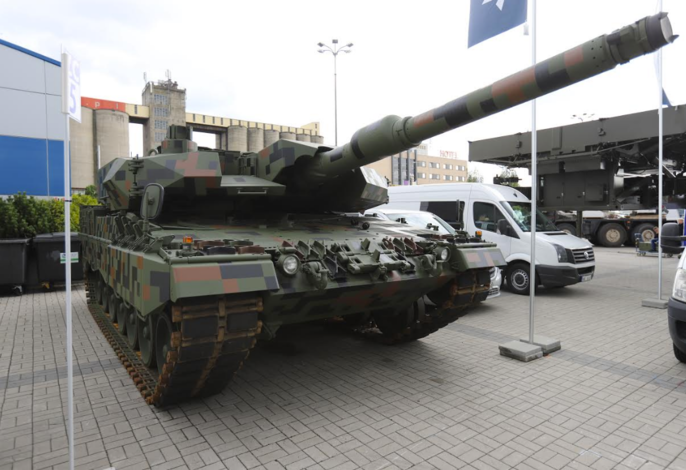
The Leopard 2PL demo vehicle, in comparison with the defined scope of modernization that is already known, including changes of the fire control system or enhanced armour, also received some enhancements that would improve the crew comfort and everyday use of the tank. A large case for extra equipment has been fitted onto the back side of the turret, the side-covers have a changed shape, with the rear drive wheels being exposed. New mounting points for inspection holes are less visible.
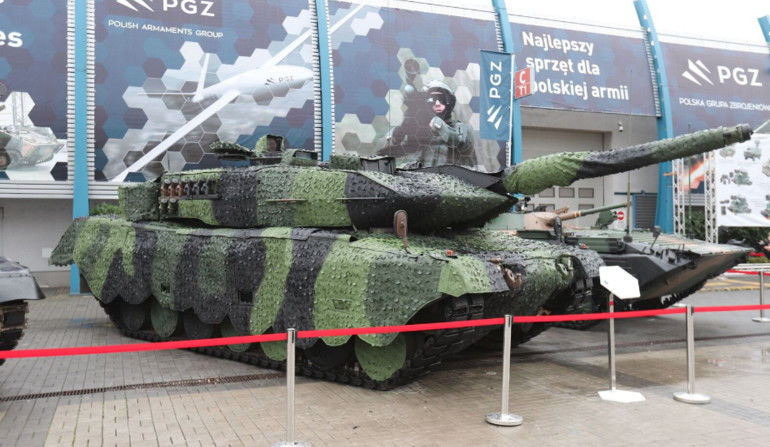
Meanwhile, Poznan-based Military Automotive Works facility, also belonging to the PGZ Group, is presenting a modernization proposal for the Leopard 2A5 tank, assuming that it would receive the Lubawa Group multi-spectral mobile camouflage. Utilizing this type of camouflage makes it more difficult to detect the tank using the eyesight or observation sensors, such as radar or FLIR devices. Considering the common use of thermal vision systems or UAVs that provide artillery with firing solutions, the issue of ensuring detection-safety for the armoured units is becoming more and more important.
The presented PT-91M2 modernization programme (that could be applied also in case of the older T-721 MBTs) seems to be quite realistic, within reach of the Polish industry, and also economically justifiable. Obviously, the said scope of modernization would not make the tank modern enough to compete with the new generation vehicles, nonetheless it would, at an affordable price, secure its abilities and allow for continuity in the training activities, which would make it possible to get ready for acquisition of new platforms. It is also important to introduce new, effective ammunition in parallel.
PT-17 modernization is much more expensive, and this upgrade, or some of its elements, could become a part of the PGZ’s export offer.
Leopard 2PL, in line with the adopted schedule, is to be received by the WITPIS (Military Institute of Armoured and Automotive Technology), where a comparative test programme is to take place. The vehicle will be received by the military in the third quarter of the year.
